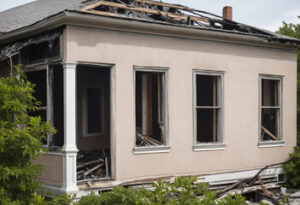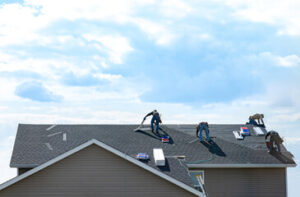Generating a steady stream of high-quality Pest Control Leads is critical to the success of pest control businesses. Fortunately, there are several ways to do so.
Local SEO and third-party listing sites help attract local customers who are searching for pest control services in their area. Local listings also allow for the inclusion of customer reviews, which boosts credibility.

SEO
For pest control companies, generating qualified leads is a crucial step in driving business growth and achieving sustained success. A robust lead generation strategy combines multiple tactics to reach potential customers and convert them into loyal clients.
Effective marketing begins with a clear understanding of your target market, including their demographics and online behaviors. This helps you craft content that speaks directly to your audience and provides them with the information they need to make an informed purchase decision.
Social media is another great way to generate leads by sharing educational content that highlights your expertise in the industry. For example, you can offer seasonal pest prevention tips or explain the dangers of unchecked infestations. You can also capture email addresses by offering downloadable resources like checklists or eBooks in exchange for contact information.
Referral marketing is a cost-effective way to generate high-quality leads for your pest control company. Incentives like discounts on services or gift cards can motivate existing customers to spread the word about their positive experiences with your company. You can also team up with local businesses or real estate agents to tap into new client referrals.
Social Media
Valid leads are the lifeblood of any pest control company. They fuel growth, allow your business to serve more clients, and help you reach sustainable success. But, finding high-quality leads takes time and effort. The good news is that digital marketing offers an efficient way to connect with potential customers at the right place and time, increasing your chance of converting them into repeat customers.
Your online presence is critical for your pest control lead generation efforts. Optimizing your website for search, posting on social media, and utilizing Google Ads are effective ways to increase your visibility online. However, it’s important to understand that not all platforms will work the same for your business. Different social media platforms cater to specific audiences and require a different approach to marketing.
For example, LinkedIn is a professional platform that caters to businesses. This means you’ll have a different audience than Facebook, and will need to focus on your content strategy accordingly.
Another strategy that’s effective on all platforms is email marketing. This marketing workhorse helps you communicate with new and existing customers, drive traffic to your website, share promotions, conduct surveys, and more, all within one channel.
Content Marketing
Content marketing is the creation and distribution of useful, relevant information to potential customers. It can include blog posts, social media updates, emails, podcasts, video tutorials, and more. It’s a powerful tool for pest control businesses because it positions them as experts in their field, builds trust with prospects, and generates leads.
Create educational content that addresses common pest problems and how your services provide solutions. This can be in the form of informative articles, how-to guides, or downloadable resources such as checklists, ebooks, or seasonal guides. When you share this content, be sure to capture contact details by offering a newsletter subscription or free consultation in exchange. This is a great way to build your email list and nurture leads until they are ready to book a service.
Networking with local business and community leaders is another effective way to generate leads. This can be through events, conferences, sponsorships, or even wrapping your fleet vehicles (which boosts recognition 15x more than traditional advertising). Streamlined sales and customer service also contribute to successful lead generation. When your clients are happy with your work, they are more likely to refer you to their friends and family.
Referral Marketing
One of the most effective ways to generate high-quality pest control leads is through referral marketing. By offering incentives for new customers to refer you, you can attract more prospects while bolstering the loyalty of your existing client base.
Online reviews can also help your business rank higher in search results, boosting visibility among local prospects. Encourage your current customers to leave a review of your services, and send follow-up emails after every service to remind them. A high number of positive reviews will signal to potential clients that your company is reliable, and it will make them more likely to book an appointment.
Social media channels can be another effective platform for generating pest control leads, particularly Facebook and LinkedIn. LinkedIn is a professional network, so the content here should focus on your business’s services and how these benefit business owners.
Ensure your lead generation strategies are working effectively by using an integrated solution that can track and record leads from multiple sources. Look for a partner that offers flexible terms, contract-free services, and transparent pricing. This will ensure that you are getting a return on your investment and allow you to manage your entire digital marketing strategy from one central dashboard.
Webinars
A steady flow of high-quality leads is vital to the growth and success of any business, including pest control. To ensure that customers are always getting the best possible service, pest control companies need to utilize a variety of comprehensive lead generation strategies.
Webinars are a powerful tool that can help pest control businesses generate quality leads and build customer loyalty. However, implementing and tracking the right metrics is essential to maximizing the effectiveness of this strategy.
The conversion rate is a key metric that measures the percentage of leads that convert into paying customers. By tracking this metric, pest control businesses can assess the effectiveness of their lead generation efforts and make adjustments to improve performance.
Another important metric to track is the average cost per lead, which helps pest control companies determine how much they spend on each new customer. By analyzing the data, businesses can identify opportunities for cost-saving measures and optimize their marketing budget.
Lastly, the speed at which leads are addressed and responded to is an important indicator of how effective pest control lead generation strategies are. By tracking this metric, pest control business owners can assess their response times and make adjustments accordingly to improve conversion rates.
Facebook Groups
With Facebook’s ability to target people who’ve searched for specific keywords or phrases, pest control companies can reach a targeted audience with ads that highlight their eco-friendly methods and superior customer service. Additionally, Facebook allows businesses to hold online and offline events that attract potential customers.
Using analytics tools and metrics to evaluate the performance of lead generation campaigns is critical for pest control business owners. Tracking conversion rates, cost per lead, and ROI can help identify which strategies are working and where there is room for improvement. Based on this feedback, business owners can develop a plan to lean into those strategies and away from those that aren’t working.
Share positive customer reviews, testimonials, and success stories in your email marketing campaigns to build trust and credibility with prospective leads. This will help reassure them that your services are reliable and effective, which can increase their likelihood of converting into paying customers. Additionally, consider offering limited-time discounts or exclusive offers in your email campaigns to generate more quality leads. Keeping a steady flow of high-quality leads is crucial for any pest control business. Without a robust lead generation strategy, businesses risk stagnation and a limited ability to expand their customer base.
Word Of Mouth
One of the most effective ways to generate high-quality pest control leads is through word of mouth. This can be done through a variety of marketing channels, including social media, paid advertising, and SEO. In addition, a company can encourage customer referrals by offering rewards, such as free services or discounts on future services.
Creating informative content on a website can also help establish a business as an expert in its industry. This can be done through blogs, eBooks, and how-to guides. A website can also feature clear call-to-action buttons that invite visitors to request quotes, schedule a service, or learn more about specific offerings.
Local listings on Google and Bing and third-party listing sites can also increase a business’s visibility in search results, helping to generate leads. These listings can include reviews from past customers, a description of the business’s offerings, and contact information.
Using the strategies outlined above, pest control businesses can generate more qualified leads and drive more sales. The key is to find the right mix of channels that best suits the business’s needs and budget while maximizing return on investment. A digital marketing partner can help manage this process, ensuring that leads are qualified and converted into customers.



